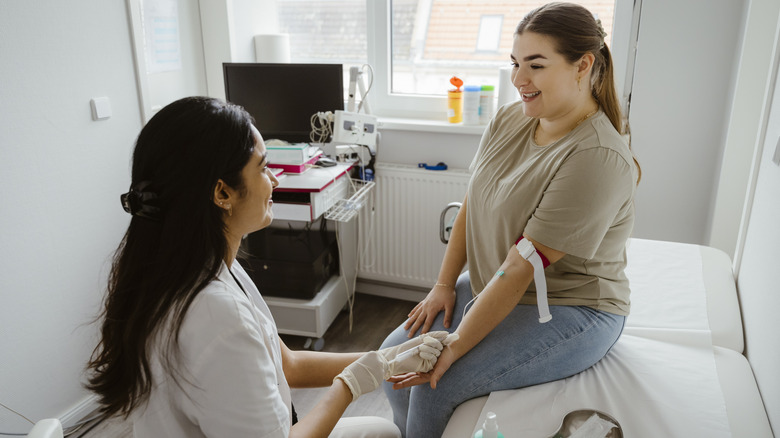How Often You Should Get Tested For High Cholesterol
Many undesirable health conditions come with early warning signs. Take gaining weight, for instance. You know immediately that you've put on pounds because your clothes fit poorly — or perhaps not at all. But high cholesterol is a sneakier problem.
Even if your cholesterol numbers go sky-high, you probably won't know it because high cholesterol typically can't be seen or felt. (Here are some myths you should stop believing about cholesterol.) That's why high cholesterol can cause so many issues: Too many people aren't aware they're at risk of heart disease until they experience a heart attack or stroke.
This is why it's important to stick with a cholesterol-friendly diet and exercise regularly. And, of course, get your total cholesterol, high-density lipoprotein (HDL or "good") cholesterol, low-density lipoprotein (LDL or "bad") cholesterol, and triglycerides checked.
A cholesterol test, also called a lipid or cholesterol panel, is a quick procedure and, for most people, not very uncomfortable (unless you're afraid of needles.) After drawing your blood, a technician will send it to a lab. Once your report is in, you may be able to see it in your patient portal, or you might receive a copy from your doctor during a visit. Easy and straightforward — and potentially a game-changer if you discover your cholesterol isn't what you'd like.
But that leads to a bigger question: How often should you get a cholesterol test? The short answer is that the frequency varies depending on a few factors, starting with your age.
Different life stages, different testing frequencies
For example, if you're an otherwise healthy adult between the ages of 20 and 40, the American Heart Association suggests that you find out your cholesterol levels every four to six years (via the Centers for Disease Control and Prevention). As you move into your late 40s and early-to-mid 50s, you can also expect to undergo more cholesterol screenings than you did as a younger adult.
As family physician Dr. Chase Noel explains (via the American Medical Association), "Once you're 40, we usually — from a screening standpoint — should do it [cholesterol testing] every three to five years." He adds that patients with higher risk factors for cardiovascular disease may be asked to test more often.
Even if you're still a younger adult in your 20s or 30s, you may need to be checked more often than your peers. This is especially true if a prior cholesterol panel showed that your LDL cholesterol level was above 100 milligrams per deciliter (mg/dL) or your HDL cholesterol reading was under 60 mg/dL, both of which are suboptimal results and may necessitate intervention.
Realistic expectations for lipid panel improvements
What happens if at any point, you find out that you have high cholesterol? Your doctor will create a personalized treatment plan that will likely include an appropriate cadence for screening your cholesterol levels. If you were diagnosed with high cholesterol and begin taking cholesterol-lowering medications like statins (after understanding the possible side effects of taking statins for your cholesterol), your doctor will want to find out if the prescription drugs are working by reviewing your lipid panel frequently.
The National Heart, Lung, and Blood Institute notes that you may initially be screened about every three months after starting statins. When your doctor feels confident that the prescriptions are working, you may only need to repeat a lipid panel about once a year.
Just be aware that you can't expect changes overnight to your cholesterol. Sure, you might take quick action. Nonetheless, it takes time for any type of cholesterol treatment to work. Even medicines typically need around four weeks to produce a measurable difference.
What if you forgo pharmaceuticals and try to bring down borderline-high cholesterol by choosing heart-friendly foods and heading to the gym? You'll probably have to wait for up to three months before your efforts start to show in your cholesterol tests.


